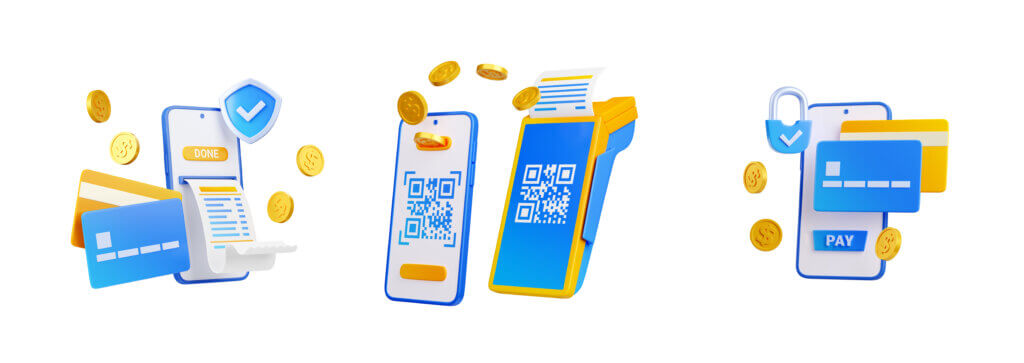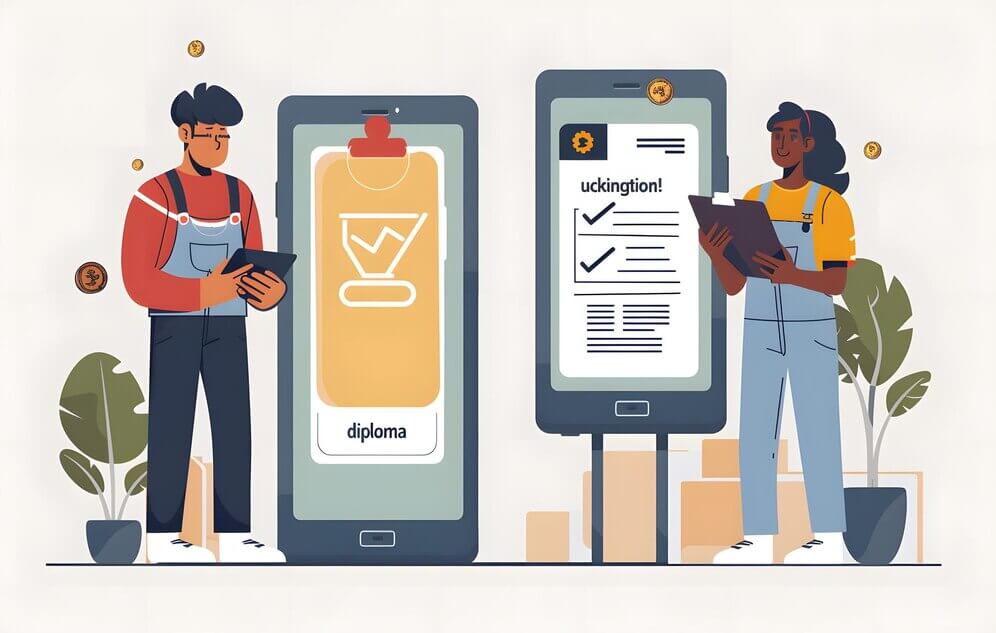Les systèmes de paiement : guide pratique pour sécuriser et rentabiliser votre application

Pour une application qui a comme objectif d’offrir des produits ou des services, l’intégration d’un système de paiement est une étape essentielle. Ces systèmes assurent la transmission sécurisée des informations sensibles des utilisateurs et garantissent la fluidité des transactions en ligne. Une expérience de paiement réussie peut transformer un simple clic en un moment de satisfaction, où tout semble couler de source.
L’intégration d’un tel système peut varier en complexité, selon les besoins techniques et les fonctionnalités souhaitées. À la question « comment monétiser une application ? », certaines solutions apportent une expérience utilisateur aussi agréable que intuitive et sont modernes, prêtes à l’emploi et surtout adaptées aux exigences les plus spécifiques de votre entreprise. Dans ce guide, nous vous invitons à faire le tour des questions intéressantes autour de la création d’une application sans code, de la sécurisation et de la rentabilisation d’un système de paiement pour application mobile.
Comment intégrer un paiement mobile comme un expert (les secrets révélés) ?

Étape 1 : Rechercher et choisir un fournisseur de mode de paiement
Une mauvaise expérience de paiement peut dissuader jusqu’à 69 % de vos utilisateurs au moment de finaliser une vente (*1).
Avant d’envisager d’intégrer un système de paiement dans une application mobile, il est important de bien choisir le partenaire. Il faut prendre le temps de comparer les offres, de poser les bonnes questions, de s’assurer que le service proposé correspond aux attentes de l’entreprise et de ses utilisateurs.
Pour trouver le fournisseur idéal, posez les questions suivantes :
- Quelles sont les fonctionnalités de sécurité incluses ?
- Comment gérez-vous la conformité PCI DSS ?
- Quel est votre modèle de tarification ? Les frais sont-ils négociables ?
- Comment votre mode de paiement s’adapte-t-il aux utilisateurs mobiles ?
- Peut-on personnaliser les écrans de paiement pour refléter l’identité de notre marque ?
- Le mode de paiement prend-il en charge les paiements récurrents ?
- Quels types de cartes et de portefeuilles mobiles sont pris en charge ?
- Offrez-vous des options de localisation pour les paiements internationaux ? Quelles devises acceptez-vous ?
Étape 2 : Configurer un compte marchand pour accepter les paiements
L’intégration d’un paiement rapide et sécurisé réduit le taux d’abandon de panier de 40 % en moins (*2).
Un compte marchand est nécessaire pour recevoir des paiements. Il sert de compte intermédiaire où les fonds sont temporairement stockés avant d’être transférés sur le compte bancaire de l’entreprise. C’est un peu comme une boîte aux lettres sécurisée, où chaque transaction attend patiemment son tour pour être traitée.
De nombreux fournisseurs modernes de modes de paiement proposent aussi des comptes marchands intégrés, permettant de gérer à la fois les paramètres avant la transaction (modes de paiement, sécurité, paiements récurrents) et les processus post-transaction (remboursements, rétro facturations, transferts de fonds, etc.). Par exemple, avec un compte développeur Google Play, vous pouvez facilement intégrer des systèmes de paiement sécurisés et adaptés aux applications mobiles.
Si vous préférez séparer votre compte marchand du mode de paiement, assurez-vous que ce dernier s’intègre facilement à votre solution de paiement existante.
Étape 3 : Configurer les méthodes de paiement et autres paramètres
67 % des utilisateurs préfèrent avoir plusieurs options de paiement lors de l’achat in app ou d’un abonnement (*2).
Une fois le compte marchand créé, il est temps de configurer les méthodes de paiement et de personnaliser l’interface. Dans l’espace d’administration, on sélectionne les options souhaitées : cartes bancaires (Visa, Mastercard, etc.), portefeuilles mobiles (Apple Pay, Google Pay), et, si nécessaire, les paiements récurrents. On définit également les pays et devises acceptés, et on personnalise la page de paiement pour qu’elle reflète l’identité visuelle de la marque. C’est ici que l’application commence à prendre vie, à devenir une extension naturelle de l’entreprise.
Avec Apptree, vous pouvez facilement intégrer ces différentes méthodes de paiement grâce à son interface intuitive et ses outils de personnalisation. Notre application builder no code simplifie également le processus de configuration, en vous permettant de définir rapidement les paramètres géographiques et les devises tout en garantissant une expérience de paiement fluide et sécurisée. Avec Apptree, chaque paiement est une victoire : rapide, fluide et parfaitement intégré !
Étape 4 : Obtenir l’API du mode de paiement et l’intégrer via du code, des SDK ou des widgets
74 % des développeurs préfèrent utiliser des SDKs pour intégrer des fonctionnalités tierces, car ils permettent une intégration plus rapide et une maintenance simplifiée (*3).
Une fois la configuration terminée, il faut intégrer le mode de paiement à l’application mobile. Cela dépend du fournisseur choisi, mais la plupart offrent une API permettant aux développeurs d’accéder à l’infrastructure de paiement en temps réel.
Trois méthodes courantes
d’intégration :
- Codage manuel : Les développeurs ajoutent l’API du mode de paiement
directement dans le code de l’application.
- SDKs (Software Development Kits) : Kits de développement fournis par le prestataire pour faciliter
l’intégration avec un minimum de code.
- Widgets : Certains fournisseurs proposent des widgets qui
s’intègrent en une ligne de code.
Si vous souhaitez créer une appli avec des solutions de paiement simples et efficaces, l’utilisation de SDKs ou de widgets peut grandement simplifier le processus d’intégration.
Étape 5 : Tester et optimiser le mode de paiement avant le lancement
Les erreurs non détectées avant le lancement peuvent coûter jusqu’à 30 fois plus cher à corriger après la mise en ligne de l’application (*4).
Avant de mettre le système en ligne, il est impératif de le tester dans un environnement de simulation. Cela permet de détecter et de corriger d’éventuelles erreurs. Une fois les tests validés, le mode de paiement peut être activé. Il reste ensuite à surveiller les transactions pour s’assurer que tout fonctionne correctement, et à ajuster les paramètres si nécessaire.
Si vous vous demandez « comment créer votre propre application ? », l’utilisation d’un App builder comme Apptree peut vous aider à intégrer facilement des solutions de paiement. Lorsque vous êtes prêt à publier votre application, vous devrez configurer des paramètres dans la Google Play Console pour garantir que votre système de paiement fonctionne correctement sur toutes les plateformes.
L’intégration des paiements n’a jamais été aussi simple grâce à Apptree : voici pourquoi !

Après avoir exploré les différentes étapes nécessaires à l’intégration d’un mode de paiement, il est important de mentionner que certaines plateformes facilitent grandement ce processus. Apptree se distingue en offrant des intégrations simples et rapides avec des solutions de paiement telles que Stripe et Mollie, qui permettent aux entreprises de gérer efficacement leurs transactions en ligne. Ces intégrations garantissent non seulement la sécurité des données sensibles des utilisateurs, mais offrent aussi une expérience fluide et intuitive, essentielle pour maximiser la satisfaction client.
Grâce à notre App Builder no code, même les entreprises ayant des besoins spécifiques peuvent bénéficier d’une personnalisation complète de leurs systèmes de paiement, sans nécessiter de développement complexe. C’est un peu comme avoir un allié invisible, toujours prêt à simplifier les choses pour que vous puissiez vous concentrer sur l’essentiel : votre entreprise et vos clients. Grâce à Apptree, dites adieu aux complexités techniques et bonjour à une gestion des paiements ultra-simplifiée !
Conclusion
En résumé, l’intégration d’un système de paiement dans une application mobile est une étape clé pour assurer la sécurité, la fluidité et la rentabilité des transactions en ligne. Il est essentiel de choisir un fournisseur de paiement adapté, de configurer correctement les comptes marchands et de tester minutieusement les paiements avant le lancement. En ajoutant des fonctionnalités comme des SDKs ou des widgets pour simplifier l’intégration, et en personnalisant l’expérience utilisateur, vous offrez une solution robuste et sécurisée. Avec Apptree, vous bénéficiez d’un App Builder no code intuitif qui rend l’intégration des paiements simple et rapide, vous permettant de vous concentrer sur l’essentiel : votre entreprise et vos clients.
Sources :
(1) : Expérience de paiement : Définition et aspects clés/Auteur : Aldrin Velázquez, questionpro.
(2) : Taux d’abandon de panier e-commerce : comment le réduire ?/Auteur : Mehdi Tazi, bridgeapi.
(3) : Intégration des solutions de paiement mobiles : un guide complet/Auteur : Antoine, Creation e-commerce
(4) : Paiement mobile : ce que vous devez savoir en 2025/Auteur : banque.meilleurtaux.










